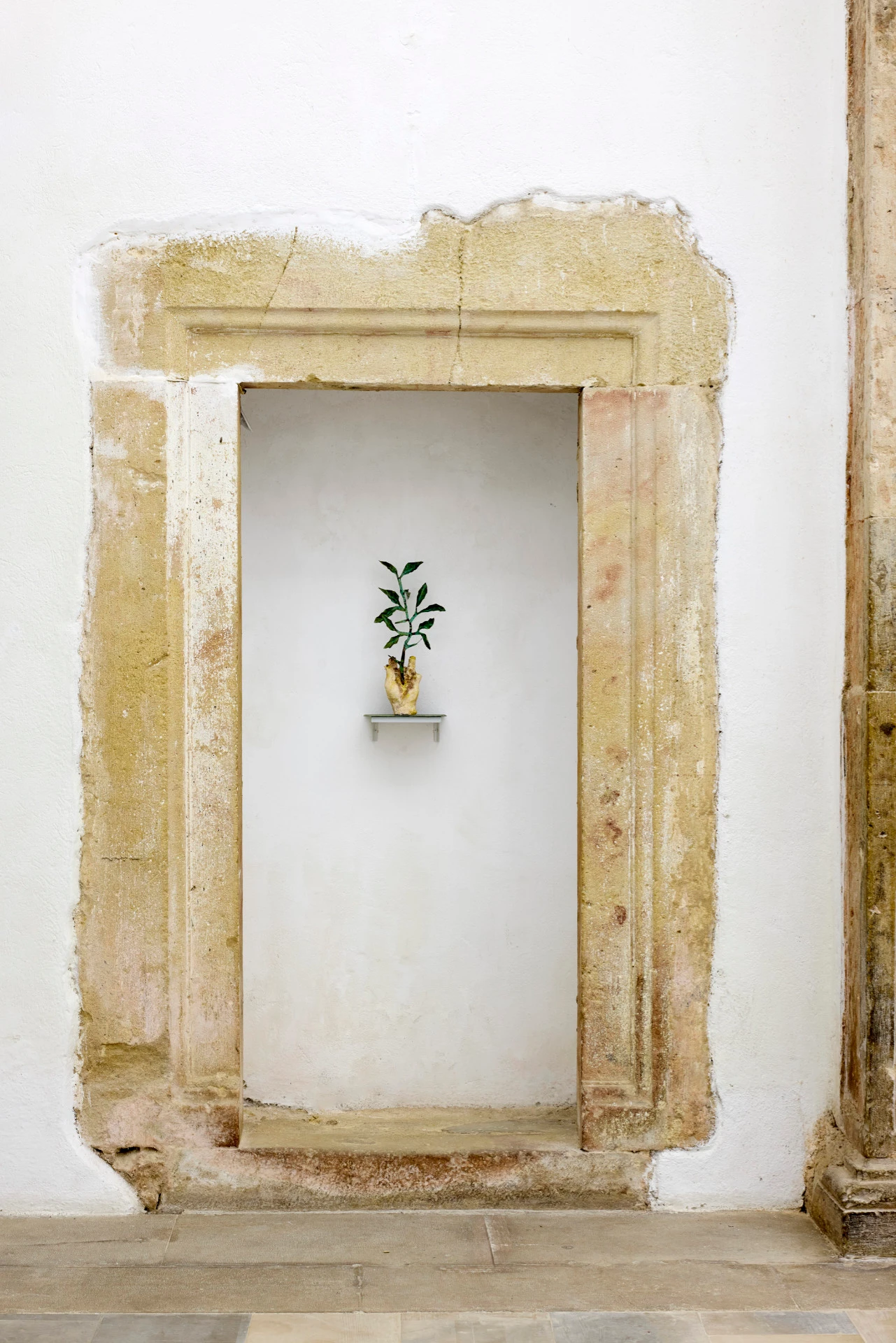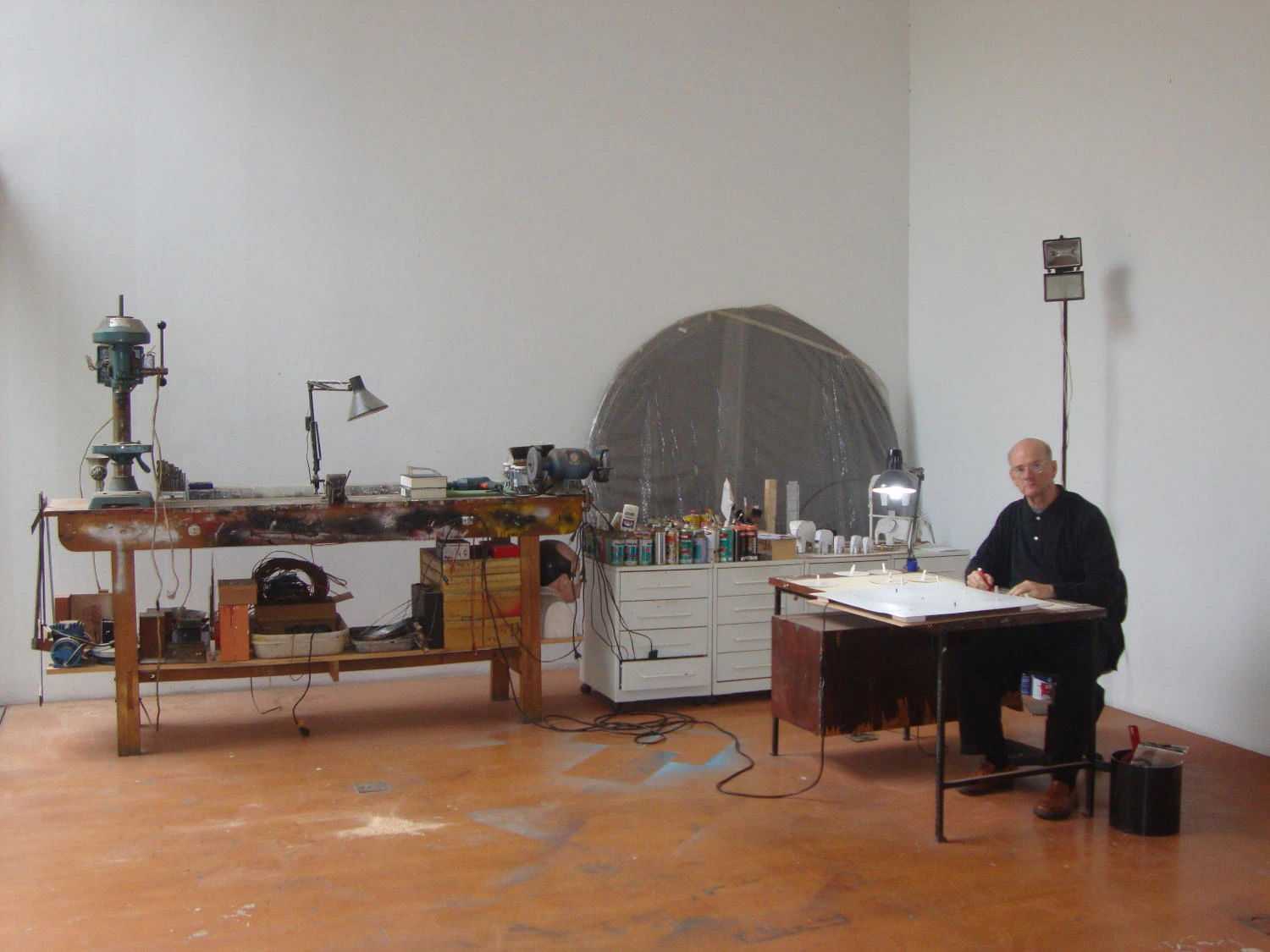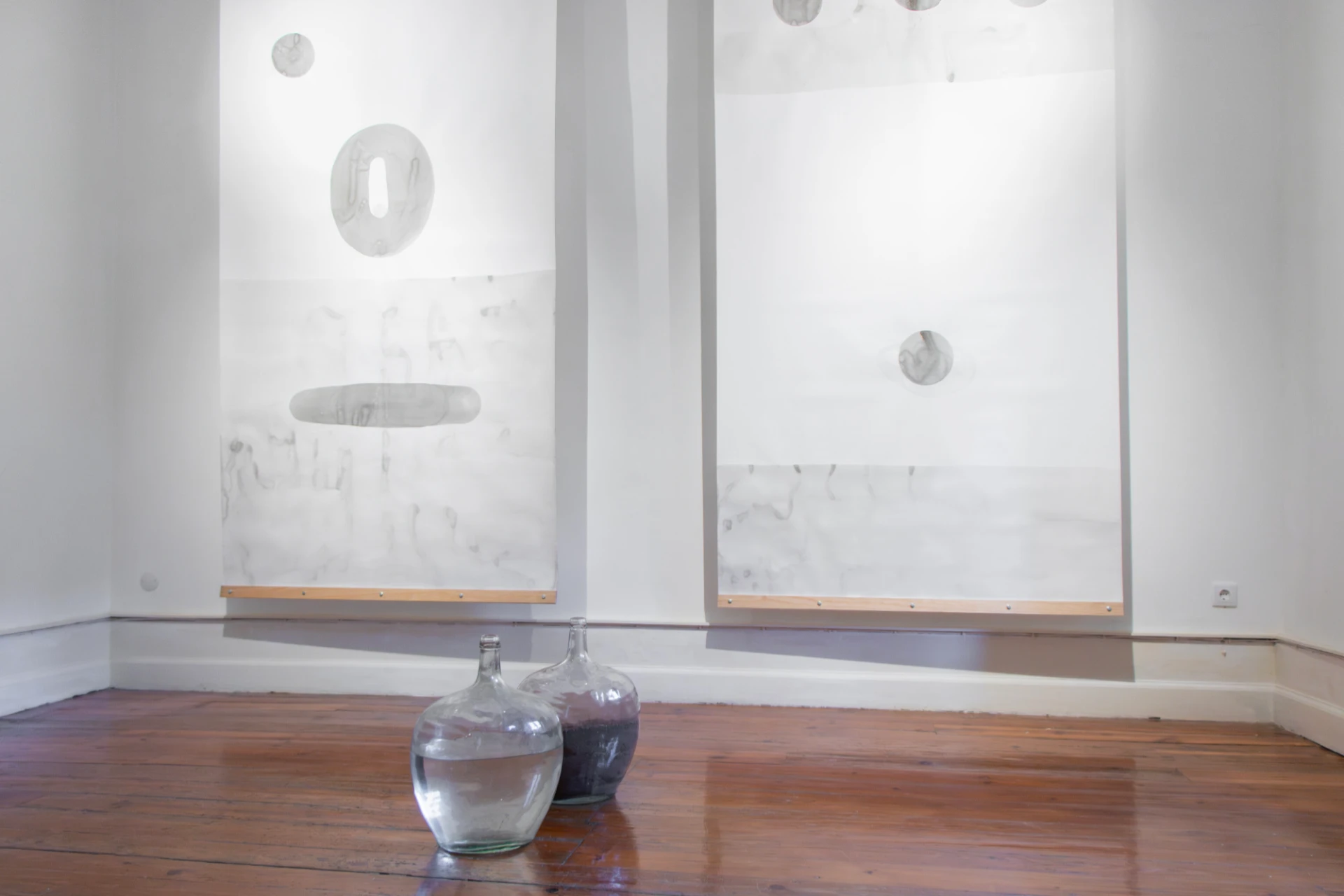article
Celestial Terrestre, by Catarina Domingues
The stains of India ink diluted in water, causing the blackness to break, appear to create orifices, reminiscent of the opening where the being is born and conceived within. The black lines covering the stains lend credibility to existence. Some are downy, others are bodies, symbolic forms, like circles. Small hints of tiny dots, seeds, and infinities that arise from the fertility of the darkness, where the light was projected.
There is a certain matter or energy that connects universality, and this is inhabited in the void. However, as the Greek myths say, it is thanks to this apparent void that the union between Gaia and Uranus, or in other words, between Earth and Heaven, was generated. However, the constitution of duality is established between invisibility and this materialization. The lines that run through everything that constitutes the environment are metaphorized amidst its shades of gray. This union between heaven and earth, in an uncomplicated way, is the being in the middle of the divine and the human, perhaps in other words, a convergence or conciliation of the Celestial and the Terrestrial.
When dawn arrives, beyond the frost that dissolves with the piercing light, which breaks through the darkness it once inhabited throughout an entire earthly space, the foliage lets water slide, crystallized, now spreading as it pierces the soil. As soon as on the mountain, the one who guides lets his song open the open air to guide the way. We are invaded by the tones of the mist, the intercession of the light, which allows the call of bells and poems, the confessions of the spirits, to linger in this apparent void. However, they say that these songs and voices should and are primarily uttered outdoors. And, like the performance that Catarina Domingues and Ricardo Ribeiro inaugurated, it was necessary to follow them slowly, beyond the top of the stairs toward the interior. The act of the body produced and followed the music in its movements. The brushstrokes filled the white with black on the leaves, the marbles rolled and broke the sound on the ground. In such a ritual, almost a pilgrimage, where we were served by the seduction of the melodic and physical composition that the body awakened, with the bells held in its arms, to its declarations and overlapping “Irradiations” of the two sitting in front of each other.
The Série Infinita, the Escandecida, projects, throughout consecutive drawings, the brief illuminations that inevitably shone in this void. The opening to infinity that occurs within it, or perhaps better said, as in Chaos1, which evokes the fecundity that occurs, as they call it, in eternal matter. The stains of India ink diluted in water, causing the blackness to break, appear to create orifices, reminiscent of the opening where the being is born and conceived within. The black lines covering the stains lend credibility to existence. Some are downy, others are bodies, symbolic forms, like circles. Small hints of tiny dots, seeds, and infinities that arise from the fertility of the darkness, where the light was projected.
Yet, in this Chaos, in this darkness where light is created, in this land where the grass rises to reach the sky, the sun, the heat, in the dawn where grayness travels among us, we conceive that the duality of light/dark, feminine/masculine, inherent to creation, is the complementarity between life and death, between pleasure and mourning. The Camélias have lost their color, resting between time, and somehow, they bring to the exhibition, as a note in their journey, the memory of this mourning, or end, in another sense, to an ephemerality of existence itself. The works entitled Heranças Íntimas also hold within themselves, like small artifacts, the place from which the work came and was made. They are witnesses to drawing, to touch, to real places, and to the credible hardness of the spiritual, abstract, one might say, enchantment of paint. The rattles on the wall, the mark of movement and sound, the stone on the chair, a suspended shell, the one that calls to the motility of the water.
However, if all soil is earth, stone, hardness, substance, masculine, this one is content and asks to be watered. The repeated contradictions and supplements are designated in water. The two bottles, one filled with earth, and one filled with water, on the upper floor, are the fermentation of the large, suspended drawings that accompany them. The black that anticipates creation, the darkness that in its fecundity illuminated the universe and made life possible, contains within itself, we might say, something like Eros, a vigor irresistible to multiplicity, a fluid, an influence so potent that the will of desire and creation is invincible. The inevitable love affair that arises between the body, and that arises between earth and sky.
A contrast or discord that provokes excitement within one another is thought-provoking. The hard and the black, with the fluidity and strange translucent opacity of water, the contour that builds and remains, with the moldable and moist, the hot with the cold. The stains of a black hole where everything flows in the works Celestial Terrestre. These seem to refer to microscopic images of fertilization. However, they also convey an abstract or spiritual notion of the cosmos, a new birth, or an infinite origin. As does their circular form, of continuity and expansion. A physical and divine relationship, where Eros, the lust of soil and water, of love, operates in this singular abyss of apparent obscurity. Nature, and its constituents, earth and sky, are a fruit of presence, born from the bursting of light in the darkness, from the blackness of paint, from a vast space where new forms and lines also arise.
In this sense, the relationship of existence stems from spiritual creation, from the divine light that summarizes the celestial, but this is the awareness of a duality or a human whole that is as firm as the ground, terrestrial and physical. A harmonization, energy, or "vital breath"2 that flows between us, as well as the celestial and the terrestrial, a palpable communion pertaining to the spirit.
"That was when I entered the mountain forest and observed its heavenly nature.
A perfect trunk appeared!
And I saw in it the complete bell stand.
Only after did I set my hands to work on the trunk.
If it hadn't been so, I would have given up.
So what I did was adjust the celestial to the celestial.
And that's why people wonder
if a spirit participated in my work" 3
The exhibition “Celestial Terrestre” by artist Catarina Domingues will be on display at Casa das Artes Bissaya Barreto until October 5th of this year.
1 Caos. (gr. Khaos). Mit.(Son of Cronos and father of Érebo and Nix). Personification of the empty space, the abyss, expanded and indeterminate space, as it was before creation.
2 Chuang Tse. Chuang Tse. Lisboa, Relógio D’Água Editores, 2017. (pág. 134)
3 Ibid., (pág. 128)
BIOGRAPHY
Lia Falcão (Coimbra, 2003) holds a degree in Fine Arts from the Caldas da Rainha School of Art and Design. She is currently pursuing a Master's in Curatorial Studies at the College of Arts of the University of Coimbra, where she has intertwined curatorial research with her artistic work, exploring fantasy as a critical thought and new possible conceptions of art.
ADVERTISING
Previous
article

01 Oct 2025
By Ana Isabel Soares
Next
article

02 Oct 2025
A studio chat with: Guto Lacaz
By Diogo Bolota
Related Posts
